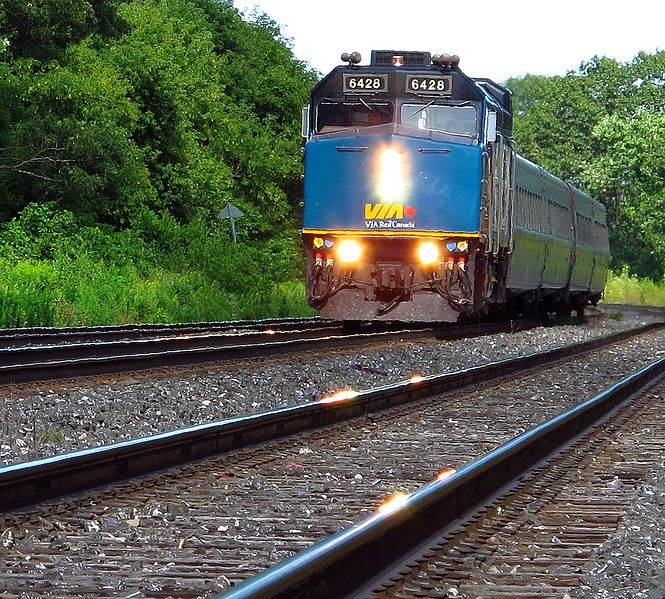7481 Woodbine Ave #203, Markham, ON L3R 2W1 (647) 806-8188
Copyright © 2021 CondoTrend. All rights reserved.

Since the construction of the first railway in Canada in 1836, rail has been vital to our nation’s development. But what began as a 26-kilometer rail line has grown into a complex network of about 43,000 kilometers of track and one of the world’s most efficient, safe and cost-effective transportation networks. Approximately 70% of all intercity surface freight and 50% of Canada’s exports are transported by rail today. In reality, Canada’s railroads transport one tonne of freight one kilometer for less than $3.50 cents on average.
The Canadian rail business is dominated by freight rail traffic, but also includes intercity passenger rail, commuter train services in three cities, and a number of urban light rail or metro systems. In addition, there are a number of tourist train routes around the nation. At the conclusion of 2019, the railway network in Canada operated over 64,800 kilometers of track and employed an average of over 34,600 people, the bulk of whom actively engaged in transport operations. In 2020, the rail industry was one of the most affected industries by the worldwide COVID-19 pandemic, despite the fact that these numbers climbed between 2018 and 2019. The pipeline and railroad demonstrations, which occurred in the same year just before the national lockdown, also contributed to the industry’s economic decline.
With almost 46,000 kilometers of track (see Addendum Table RA1), the rail transport business is an integral part of Canada’s transportation infrastructure. The rail transport business in Canada produces roughly $10 billion annually, of which 95% derived from rail freight operations and 5% from commuter, intercity, and tourist passenger train services in major metropolitan centres, corridors, and regions. The rail sector in North America is closely intertwined. Companies that operate integrated rail networks construct track to a standard gauge and maintain rails to comparable standards. Typically, loaded rail cars hauled by locomotives owned and operated by the track owner. But North American integration lets railroads that meet industry standards trade or give cars and locomotives to other railroads.

Canadian National Railway (CN) and Canadian Pacific Railway (CPR) are two of the largest freight rail operators in Canada. They are both Class I railroads, which means their income surpassed $250 million during the preceding two years. CN accounts for more than half of all revenue generated by the Canadian rail transport industry, while CPR accounts for about a third. CN and CPR account for more than 95% of Canada’s yearly rail ton-kilometres, 75% of the industry’s tracks, and 75% of the industry’s total tonnage. These two companies are critical supply chain connectors for Canada’s main trade routes and entry points. CN traverses Canada from the Atlantic Ocean to the Pacific Ocean and then follows the Mississippi River to the Gulf of Mexico, connecting Canadian, American, and Mexican consumers. It has been made feasible by CN’s 1999, 2001, and 2004 purchases of Illinois Central, Wisconsin Central, and Great Lakes Transportation with its 2004 collaboration agreement with BC Rail. CN earns about $5.5 billion in yearly freight revenues in Canada and employs 22,000 people domestically and overseas. In the meantime, CPR runs 22,500 route kilometers in six provinces and thirteen states, earns about $4 billion in yearly revenue in Canada, and employs around 15,000 people throughout its system.

VIA Rail Canada
In eight contiguous provinces, VIA maintains a nationwide network of services. It offers three types of services; Quebec–Windsor Corridor, Transcontinental, and Regional and Remote. The Quebec–Windsor Corridor has a significant focus, with many daily departures connecting all Corridor locations. Two transcontinental trains make six weekly round trips between Montreal and Halifax, and three weekly round journeys through Winnipeg and Edmonton between Toronto and Vancouver. The transcontinental trains are responsible for 22% of VIA’s earnings and 6% of its passengers. Canada has seven regional and distant services. Aspe and Victoria–Courtenay are two regional routes, whereas Montreal–Jonquière, Montreal–Senneterre, Sudbury–White River, Winnipeg–Churchill, and Jasper–Prince Rupert are distant routes. These seven services are responsible for 2% of VIA’s income and 3% of its passengers.
Two VIA Rail stations, Montreal Central Station and Quebec Station, provide level boarding for those with mobility devices. At 48 locations throughout Canada, VIA Rail provides wheelchair elevators. As a part of its Capital Investment Program, VIA is updating and refurbishing over fifty of its passenger stations throughout Canada. For instance, at Belleville, Oshawa, and Cobourg stations, an overhead footbridge with an elevator on each side of the rails has been created to enable access.
Sources: https://www.statista.com/topics/5062/rail-industry-in-canada/
https://tc.canada.ca/en/corporate-services/policies/rail-transportation
7481 Woodbine Ave #203, Markham, ON L3R 2W1 (647) 806-8188